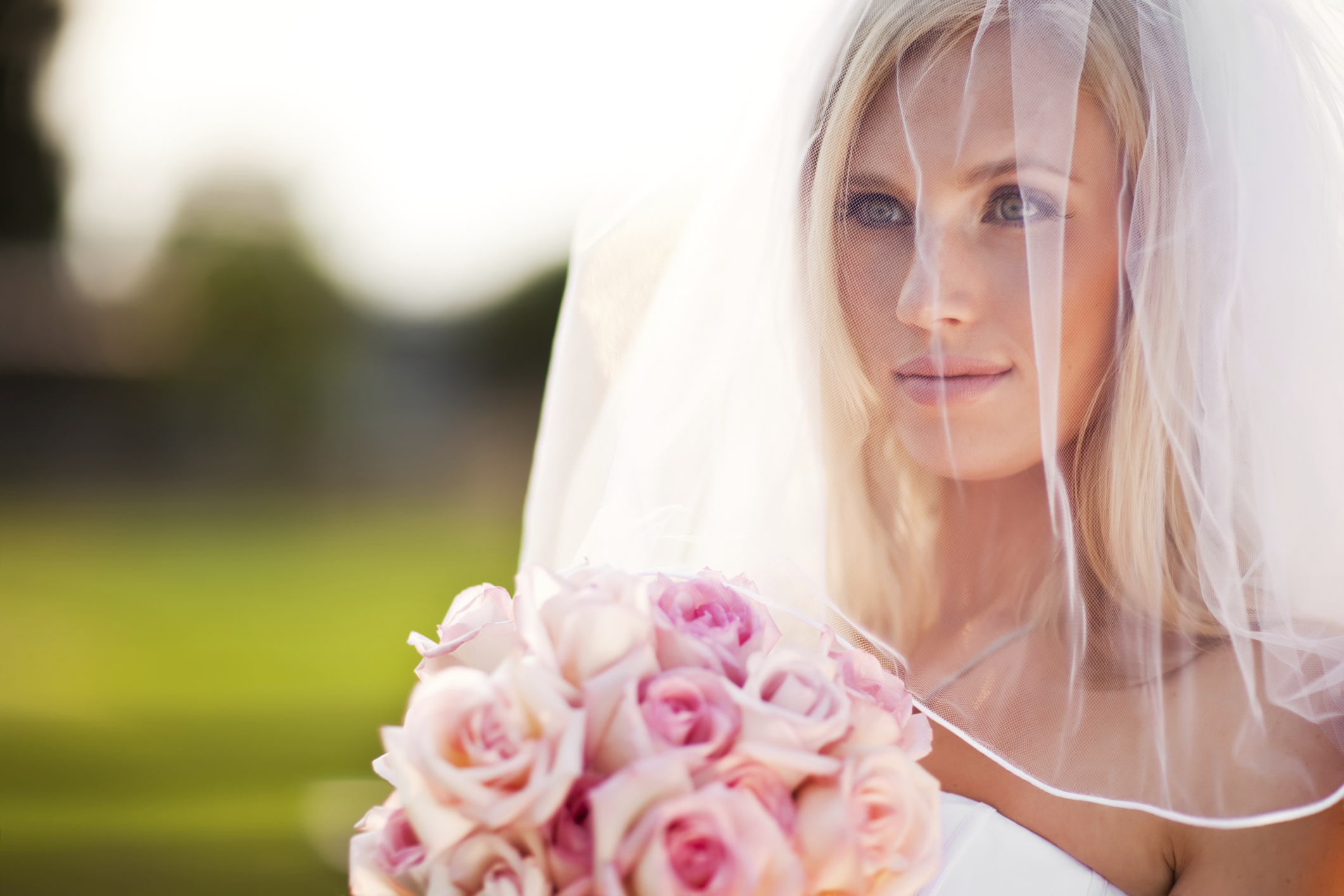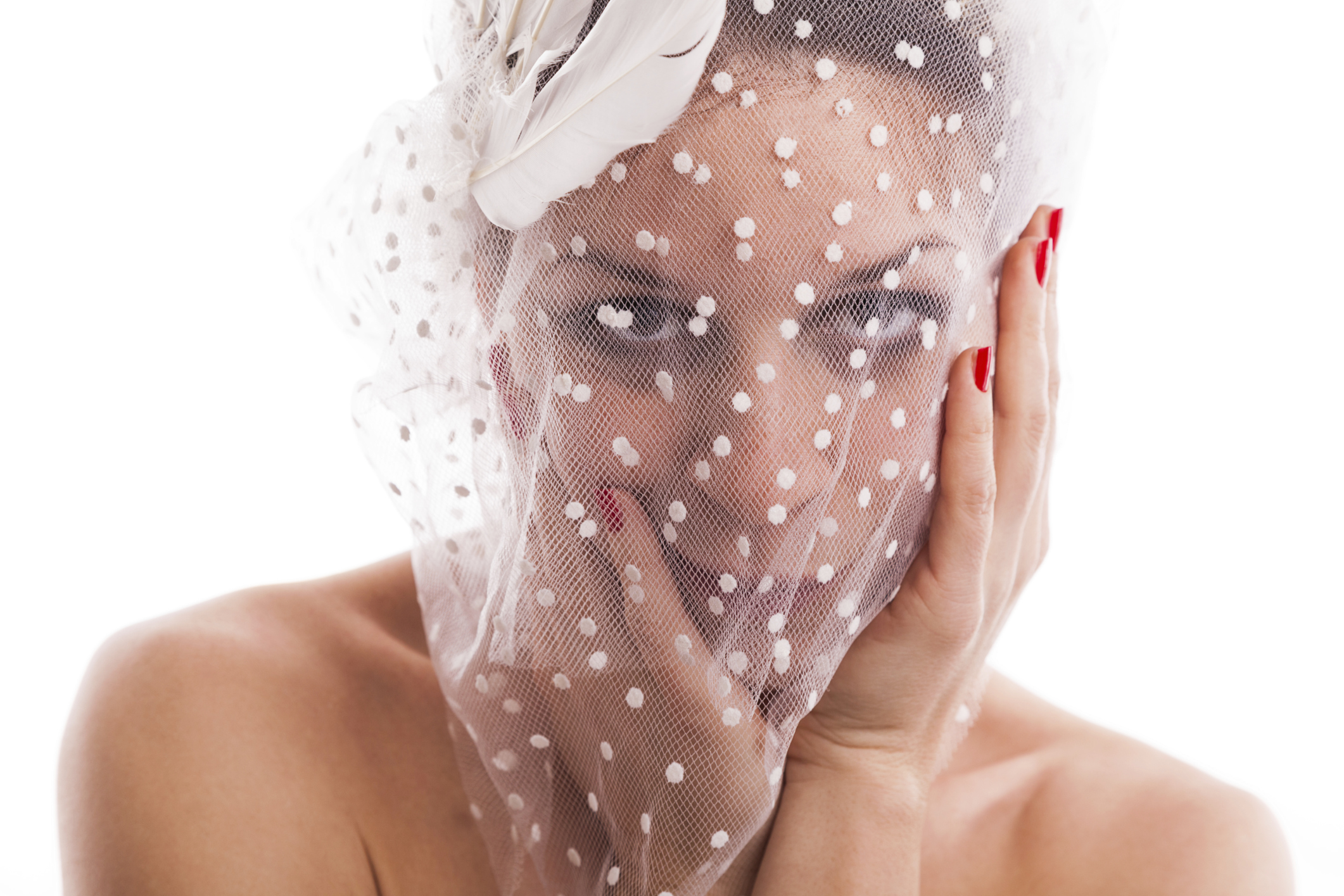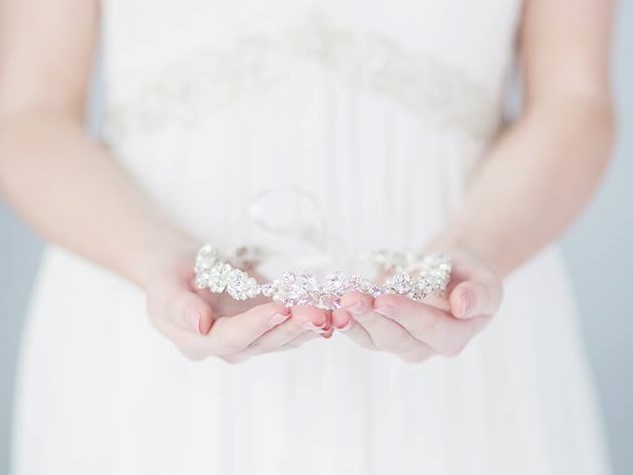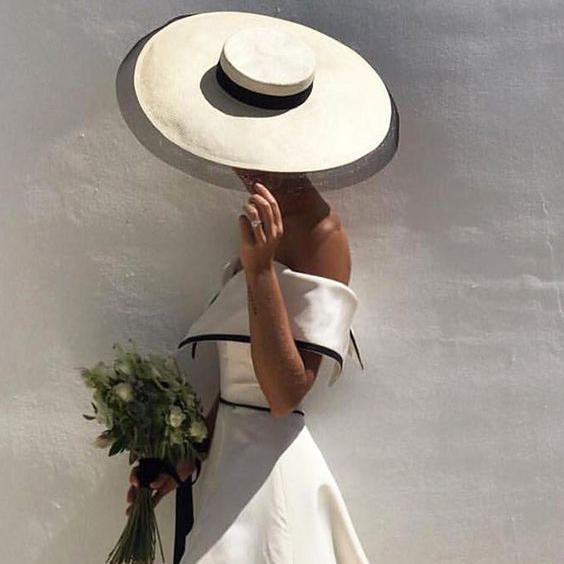When it comes to bridal accessories, the veil is the most delicate and beautiful. The bride can choose from a huge range of styles depending on her personal preferences and the look and style of her wedding gown. Check out our A-Z of bridal veil styles:
Where wedding veil lengths are mentioned this is for guidance only as each bride will choose a specific length that will be most appropriate for her height and size.
The Blusher
The blusher is the part of the veil which comes forward over the face. Any style veil can have a blusher. There are no rules or restrictions for this. Many brides decide to wear a veil that does not have a blusher at all and just hangs down the back. The bridal blusher is generally 18 inches in length but this can vary.
The Bouffant veil
A bouffant is a very short veil that was fashionable back in the sixties. A bouffant really works with a simple wedding dress, and looks great with a shorter hairstyle. The standard length will just touch the top of the bride’s shoulders.
The Cathedral veil
The cathedral veil is about 144 inches long. It is an extremely long veil, and whilst it looks elegant and classic, it is quite tricky to manage. Brides need assistance from the bridesmaids in lifting it when walking, and setting it out when taking photographs. Most modern brides feel a veil of this length is too much to manage, especially if they are likely to be outside on the wedding day.
The Chapel veil
The chapel is the first veil to have a train, at around 108 inches in length. Whilst it is usual that the length of your veil should match the length of the train on your wedding dress, this is not a fixed rule. In fact, wearing a veil with a train can look very soft and very feminine when the dress has no train at all.
The Detachable veil
If you want the best of both worlds, look for detachable veil that comes in two pieces. This means that the bride can attend the ceremony with a lovely chapel or cathedral length veil, and then remove the longer portion of the veil, leaving a fingertip or elbow length veil only, giving two distinct bridal looks.
The Elbow veil
The Elbow is a shorter style veil, and as the same suggests it reaches the top of the elbow. It is very flattering for younger brides in their early twenties when worn with a strapless ball gown style wedding dress.
The Fingertip veil
This veil ends at the fingertips, and is one of the more versatile styles – suiting all wedding gowns and brides of all ages. Curvier brides that don’t want a full length veil should consider this option.
The Knee veil
A knee length veil is extremely attractive when worn with a tea length gown, which is quite an American trend. It is a casual, refreshing look that works particularly well for outdoor, daytime weddings.
The Royal veil
The Royal is the longest of all veils at around 180 inches in length. Not many brides chose this particular length as it is difficult to manage and is also very expensive. You’ll only usually see this length at royal weddings!
The Shoulder veil
The shoulder is an extended version of the bouffant veil, which sits just below the shoulder. The bottom of the veil is in line with the top of the armpit.
The Waist veil
The waist veil is a longer version of the elbow veil. It is a couple of inches longer than the elbow veil and sits just at the waist.
The Waltz veil
The waltz is a very elegant veil as it has just enough length to sweep the floor. Alternatively it may fall half and inch short of the floor. This look was very popular back in the 1920s, and also back in the early 1800s.
This article was provided by: Sweet Petites and edited for publication by Easy Weddings UK




